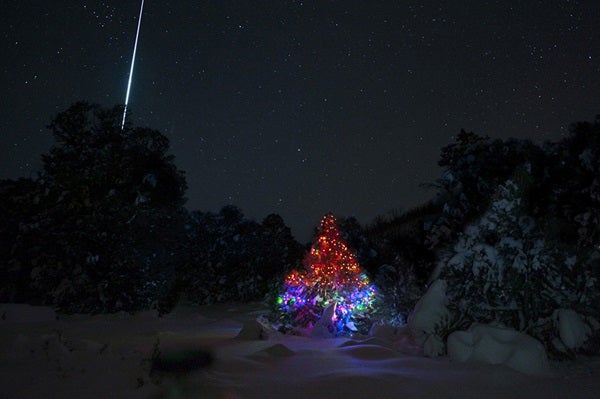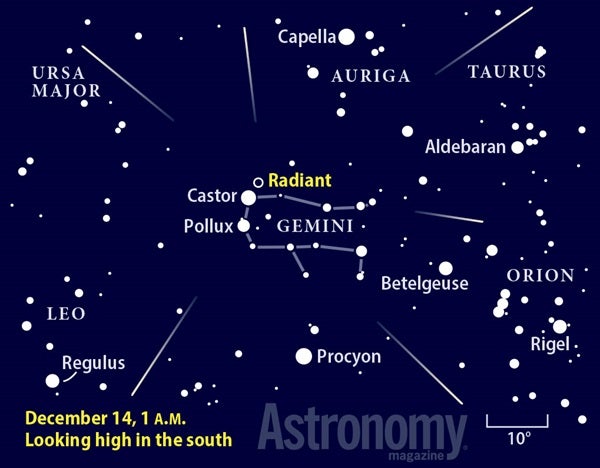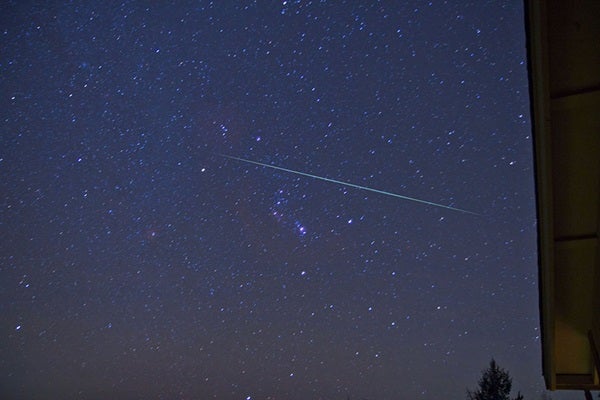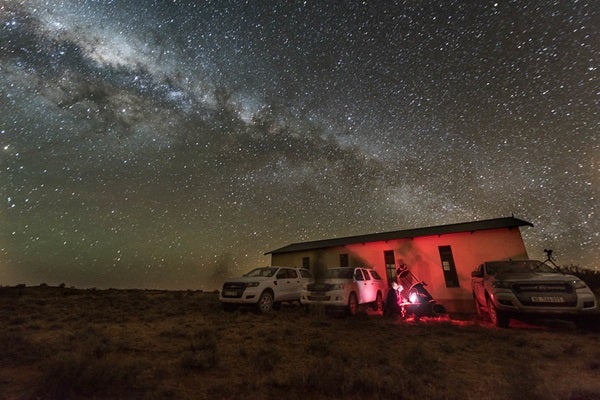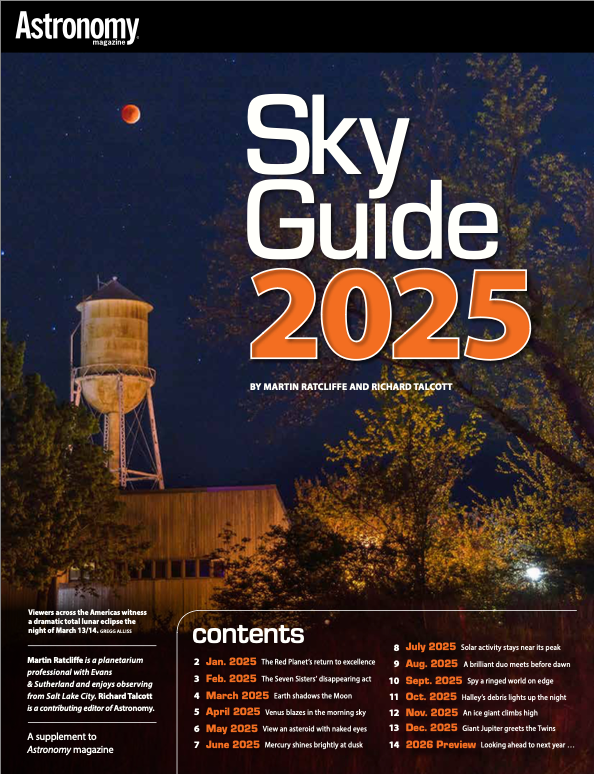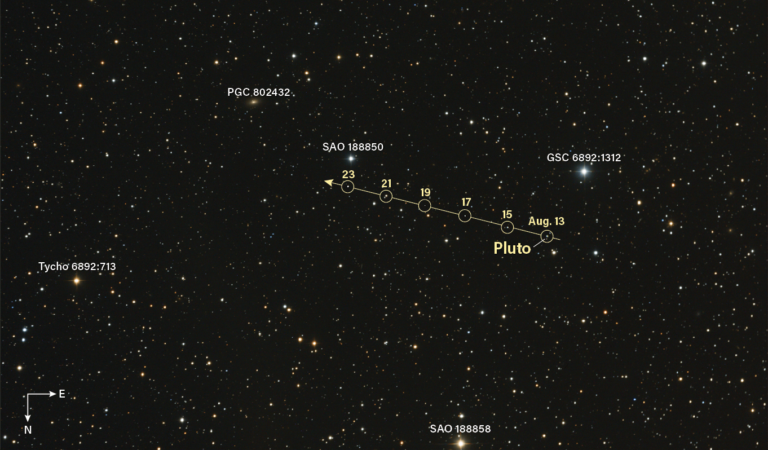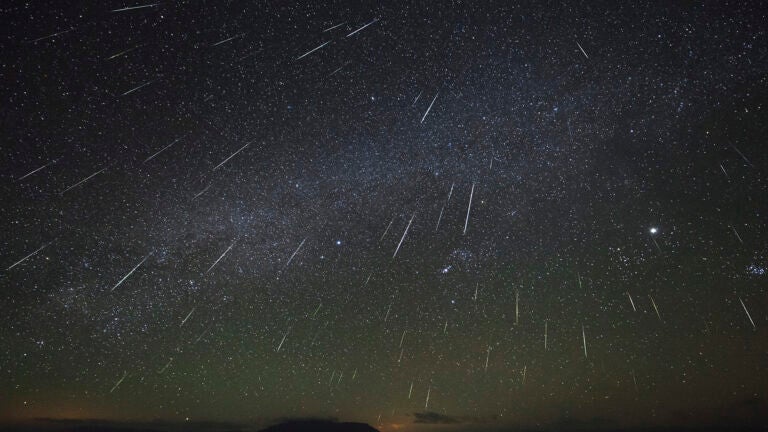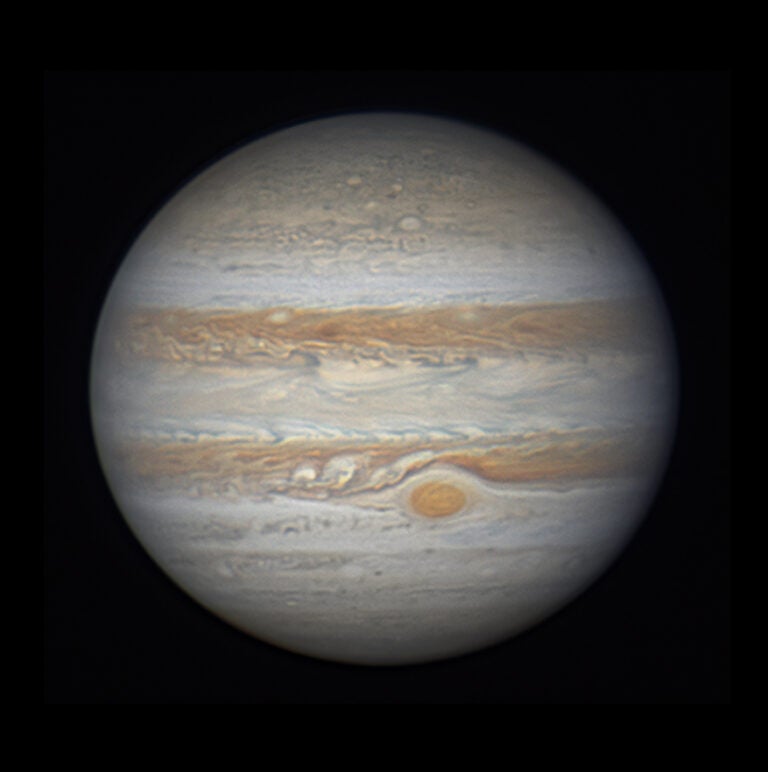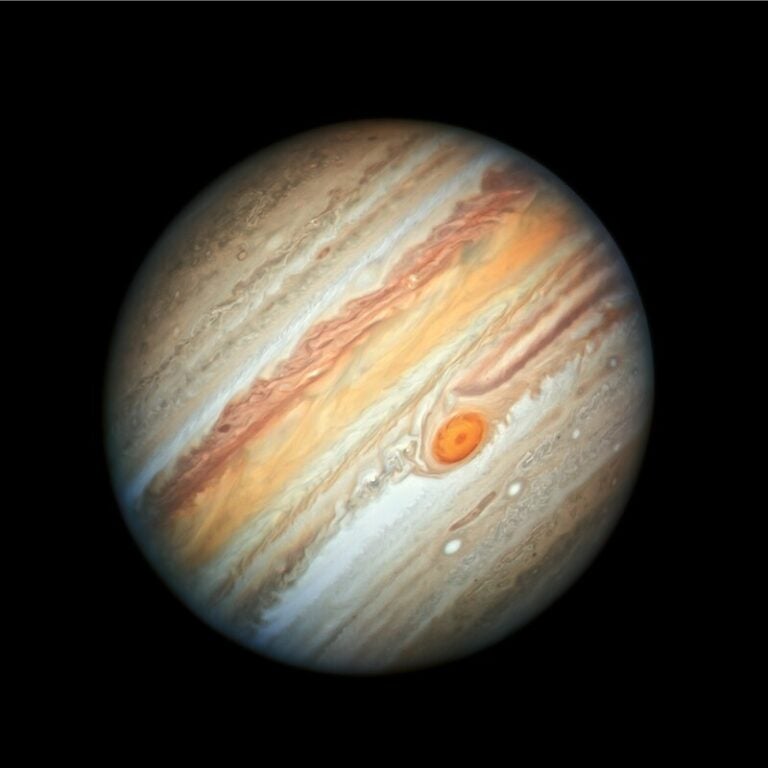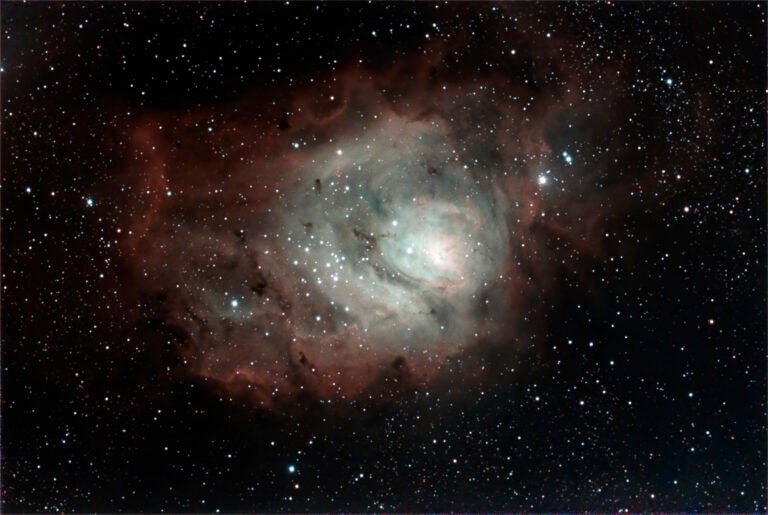And this year’s Geminid meteor shower is at its prime under dark skies just three days after New Moon. That leaves no moonlight to wash out the bright streaks from this prolific meteor shower.
“No astronomy activity is easier or more social than meteor watching,” says Astronomy Senior Editor Michael E. Bakich. “You don’t need any equipment except a chair. Just grab some friends, bundle up, and watch the show.”
• Watch a video with meteor shower observing tips
• Learn how to photograph the Geminids like a pro
• Find more celestial events in “The Sky This Month”
This radiant point climbs nearly overhead at around 2 a.m. local time, which is when viewing is the best. But don’t stare right at the radiant. Instead, you’ll see longer streaks if you look about 40° to 60° away.
To maximize your meteor count, you’ll have to head away from bright city lights and find a fairly dark observing spot.
The Geminids are known for their slow-moving streaks in comparison to other yearly showers. November’s Leonids soar into our atmosphere at some 159,000 mph (256,000 km/h), but the Geminids move at a relative crawl of just 78,000 mph (126,000 km/h).
Because the Geminids move so slowly, it’s one of the few meteor showers where incoming space rocks can actually survive the fall to Earth. So scientists at NASA’s Meteoroid Environment Office have taken to tracking this annual show to better understand where these meteors come from. If they can find a meteorite, it would be like a sample return mission to Phaethon.
Fortunately, you don’t have to track every meteor you see from your lawn chair. All you have to do it look up and enjoy the show.
Eric Betz is an Astronomy associate editor. He’s on Twitter: @ericbetz.

